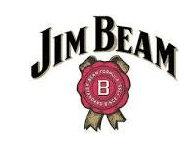In brief
The decision of Jim Beam Brands Co v Donald and Christine Crowden [2019] ATMO 21 sends a clear warning to traders wishing to adopt trade marks that essentially replicate well-known marks, while also confirming the rights vested in a well-known mark can extend to unrelated goods or services. Senior Associate Lena Balakrishnan reports on the Trade Mark Office's decision.
Background
The Crowdens provided transportation services targeting customers that had consumed too much alcohol. They sought registration for the below logo in respect of 'Vehicle transport services including driving services; transport of vehicles on behalf of a vehicle owner; arrangement of passenger transport' in class 39:
(DIAL A DRIVER logo)
The logo shared a number of essential features with Jim Beam's famous eyebrow and rosette logo depicted below:

(Jim Beam logo)
Jim Beam Brands is most famously known for its JIM BEAM bourbon whiskey, which is recognised as one of the best-selling brands of bourbon in the world. Since at least the 1960s, the Jim Beam logo has featured on all bourbon whiskey products sold by Jim Beam Brands, as well as on merchandise and marketing material. The evidence lodged by Jim Beam Brands confirmed it had acquired a significant reputation in the Jim Beam logo, including earning 'iconic status' in Australia.
Jim Beam also sponsored the Dick Johnson V8 Supercar Rally team from 2007-2014, through which the Jim Beam logo appeared on all vehicles driven by the Dick Johnson Racing team.

(source of image: www.zimbio.com)
The Dick Johnson Racing team regularly raced its vehicles bearing the logo at the Bathurst Supercar Rally series. In 2012, to ensure spectators of the Bathurst Supercar Rally series had suitable transport to and from the race track, Jim Beam also offered a transportation bus called the Jim Beam Travel Safe Bus. The flyer for this service also depicted the Jim Beam logo. While Jim Beam Brands owned a number of registrations for the Jim Beam logo, none of the registrations covered class 39 services.
Jim Beam's evidence also included extracts from the Crowdens' website and Facebook page, with a number of images comparing the vehicles bearing the DIAL A DRIVER logo with the vehicles bearing the JIM BEAM logo:

These images strongly inferred that the Crowdens deliberately tried to imitate or replicate both the Jim Beam logo and the Dick Johnson Racing car in the creation and use of the DIAL A DRIVER logo.
Decision
Even though the Crowdens changed some words in the Jim Beam logo, the Hearing Officer did not find these changes amounted to a parody or 'cheeky take' on the Jim Beam logo. The Hearing Officer agreed the overall similarities between the marks were so apparent that consumers could be misled or deceived into thinking the services were in some way associated with, or endorsed by, Jim Beam, stating at paragraph 43 of the decision:
[A]lthough the Applicants' intentions in this regard are unknown, their prior use of the Trade Mark, in particular their internet postings… strongly suggest that they have deliberately cultivated a perception by consumers that there is an affiliation or association between the Services and the Opponent which does not and did not exist. There is no indication that such postings were 'cheeky' or intended as parody, being, in my estimation, more 'rip-off' than 'take-off'.
Any use of the DIAL A DRIVER logo by the Crowdens was likely to mislead or deceive consumers, or amount to a false representation in trade, in contravention of sections 18 and 29 of Schedule 2 of the Competition and Consumer Act 2010 (Cth). Registration was therefore refused under section 42(b) of the Trade Marks Act 1995 (Cth) (the TMA), where use of the mark is likely to be contrary to law.
Take home points
This case sends a stern warning to traders who think they can simply change a few words of a well-known mark to avoid liability under the TMA or Australian Consumer Law. Unlike comparable legislation in other jurisdictions, such as New Zealand or the United Kingdom, there is no basis under Australia's TMA for examiners to refuse registration of a trade mark which conflicts with an earlier, well-known mark. It is left up to trade mark owners and rights holders to oppose the registration of marks that mimic or closely resemble their well-known marks to prevent such marks from proceeding to registration. While the Australian Trade Marks Office will cite a prior trade mark on the Register that conflicts with a later filed mark, if that prior mark covers different goods or services to the mark being applied for (as was the case with Jim Beam's registered rights in the Jim Beam logo), the prior marks will not be cited.
What can you do as the owner of a well-known mark?
Rights holders should routinely monitor the Australian Register for any marks that may contain elements that resemble their well-known marks and consider the merits of opposing registration of marks that are similar in appearance, even if the application covers different goods and services.




